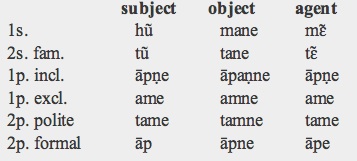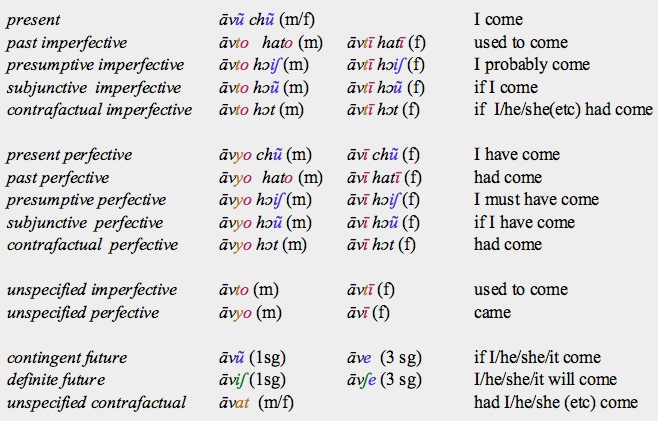An insatiable appetite for ancient and modern tongues


Classification: Indo-European, Indo-Iranian, Modern Indo-Aryan, Southwestern.
Overview. Gujarati is a regional language of India, restricted in great measure to the state of Gujarat and related to its neighbor Marathi. It originated in western India after the demise of the Gurjara-Pratihara dynasty, which gave the language its name, at the beginning of the second millennium CE. Gujarati is, like other Modern Indo-Aryan languages, a descendant of Sanskrit which has a much simpler morphology than his ancestor.
Distribution. Gujarati is spoken mainly in India, in the state of Gujarat and the adjacent areas of Maharashtra (especially in Mumbai) as well as in Lower Punjab and Sind in Pakistan. There is a Gujarati-speaking diaspora in the Persian Gulf, East Africa, Great Britain and North America.
Speakers. About 55 million in the following countries:
India
Tanzania
Great Britain
Uganda
U.S.A.
Kenya
Pakistan
Malawi
Oman
Zambia
53,500,000
348,000
310,000
300,000
243,000
160,000
100,000
44,000
33,000
23,000
-
In India, 49.6 million Gujarati speakers live in Gujarat and 2.7 million in Maharashtra.
Status. Gujarati is the official language of the Indian state of Gujarat and one of the 23 official languages of India.
Varieties. The main ones are Standard Gujarati (between Ahmedabad and Vadodara), Surati (southeastern Gujarat), Kathiawari (peninsula of Saurashtra), Carotari (central Gujarat) and Patani (northern Gujarat). The Gujarati spoken in Pakistan is very similar to Patani. Kutchi (also called Kacchi), spoken in western Gujarat, is a closely related language influenced by the neighboring Sindhi of Pakistan. Outside South Asia, the most distinctive variant is East African Gujarati.
Periods. The main differences between these three stages of Gujarati are phonological:
12th-15th c. Old Gujarati
15th-18th c. Middle Gujarati
18th c.-present. Modern Gujarati
Oldest Document. It is the Bharateśvara-bāhubali, a didactic narrative poem (rāsa) composed by Śālibhadrasūri in 1185.
Phonology
Vowels (8). All vowels, except [e] and [o], occur nasalized, and in murmured and non-murmured forms. Gujarati has short and long vowels but they are not contrastive.

Consonants (31). Gujarati has 31 consonants in total including 20 stops, 3 fricatives, 3 nasals, and 5 liquids and glides. The stops and nasals are articulated at five different places being classified as: labial, dental, retroflex, palatal and velar. The palatal stops are, in fact, affricates. Every series of stops includes voiceless and voiced consonants, unaspirated and aspirated, this four-way contrast being unique to Indo-Aryan among Indo-European languages (Proto-Indoeuropean had a three-way contrast only).
The retroflex consonants of Gujarati, articulated immediately behind the alveolar crest, are not from Indo-European origin though present already in Sanskrit. They are, probably, the result of Dravidian language influence. Gujarati has, also, a retroflex liquid not inherited from Sanskrit.

Script and Orthography
Gujarati has its own script. It is a syllabic alphabet (abugida), derived ultimately from Brāhmī, in which every consonant carries the inherent vowel [ə]. Its principles are similar to those of Devanāgarī script. To represent other non-initial vowels, diacritic vowel signs are added before, after, above or below a consonant.
The Gujarati alphabet consists of 47 letters ordered according to phonetic principles (below each one the standard transliteration is shown followed by its International Phonetic Alphabet equivalent). First, come the simple vowels, then the syllabic ones followed by the diphthongs (e and o derive from ancient diphthongs and were considered so by the native grammarians). After the vowels come the stops and nasal consonants divided into five groups (each of five letters) according to their place of articulation (from back to front). Within each group the order is: voiceless unaspirated stop, voiceless aspirated stop, voiced unaspirated stop, voiced aspirated stop, nasal. After these five groups, follow the semivowels (liquids and glides) also arranged according to their place of articulation. Then, the fricatives starting with the sibilants. The last two are biconsonantal groups, found only in Sanskrit loans, included traditionally in the alphabet.

-
•the vowels [e] and [ɛ] are rendered both as e; [ə] is rendered as a; [a] as ā; [o] and [ɔ] are rendered both as o; long [i] and [u] as ī and ū.
-
•The syllabic vowel ri, transliterated ṛ, is present only in Sanskrit loanwords.
-
•the aspirated stops and affricates are rendered as digraphs (pʰ = ph, dʰ = dh, etc).
-
•the retroflex stops ʈ , ɖ are transliterated ṭ , ḍ.
-
•the affricates tʃ , dʒ are transliterated c , j.
-
•the Gujarati script has three signs for sibilants (ś, ṣ, s) but both ś and ṣ are pronounced ʃ.
-
•the glottal fricative ɦ is transliterated h.
-
•the nasal ɳ is rendered ṇ. There are signs for the palatal and velar nasals (ñ, ṅ) in the script but they are pronounced as n.
-
•the retroflex liquid ɭ is transliterated ḷ.
-
•the glide w is transliterated v.
Morphology
-
Nominal. Some nouns and adjectives are inflected while others are invariable. Inflected adjectives agree in case, gender and number with the nouns they qualify.
-
•gender: masculine, neuter, feminine. Masculine singular nouns end in -o, neuter ones in -ũ and feminines in -ī.
-
•number: singular, plural. The plural marker is -o.
-
•case: nominative, oblique, vocative.
-
The nominative case is used for subject and direct object.

-
The oblique case is used for nouns accompanied by postpositions which serve as markers for other syntactical functions.
-
The vocative is morphologically undistinguishable from the oblique.
-
•pronouns: personal, demonstrative, interrogative, relative, indefinite.

-
Personal pronouns have inclusive and exclusive first person plural forms. They are genderless but distinguish three degrees of status in the second person: the 2nd singular is the familiar form, for a more polite form the 2nd plural is used (even for a single person); besides there is another 2nd plural form which is very formal.
-
The 3rd person uses demonstrative pronouns.
-
Pronouns are declined in three cases to mark the subject, object or agent of a verbal construction.

-
Demonstrative pronouns distinguish proximal and distal degrees and have a plural polite form.
-
Gujarati has two interrogative pronouns: kɔṇ ('who?') and śũ ('what?'). Other interrogative words are: kyāre ('when?'), kyā̃, ('where?'), kɛm ('why?'):
-
The relative pronoun is inflected for number and case: je (nom. sg), jeo (nom. pl.). Its correlative in the main clause is the distal demonstrative pronoun.
-
•compounds: Gujarati uses compound words formed by combination of adjectives and nouns i.e., adjective-noun, noun-adjective, noun-noun, adjective-adjective.
-
‣In the adjective-noun type, the adjective is an attribute of the noun (e.g. black-bird).
-
‣The noun-adjective type is employed for comparisons (e.g. ice-cold = cold as ice).
-
‣The noun-noun type, has two varieties: in one of them both nouns are joined by an imaginary copulative conjunction (e.g. apple-orange = apple and orange); in the other the last noun is the main element establishing different syntactical relationships with the other noun, like genitive, locative, instrumental, etc (e.g. house-master = master of the house).
-
‣The adjective-adjective type is like the copulative noun-noun subtype (e.g. tall-beautiful = tall and beautiful).
-
Verbal
-
•person and number: 1s, 2s, 3s; 1p, 2p, 3p.
-
•aspect: imperfective (including habitual and continuous actions) and perfective (completed activities). They originate two stem types. The imperfective stem is formed by attaching the affix -t- to the verb root and the perfective one by adding -y- to it.
-
•mood: mood and tense are intertwined in Gujarati. The presumptive, subjunctive and contrafactual are considered an integral part of the tense system. Only the imperative is considered an independent mood.
-
•tense: most finite-verbs combine aspect and tense-mood. There are two aspects, imperfective and perfective and five different forms of the verb 'to be' (hɔvũ): present, past, presumptive, subjunctive and contrafactual (past conditional). Combined together, they produce ten (compound) aspectual tenses.
-
Besides these, Gujarati has two non-tense forms (unspecified imperfective, unspecified perfective), two non-aspectual forms (unspecified contrafactual, definite future), and one form without aspect and tense (contingent future).
-
The simple present is formed by adding personal markers directly to the verb root + the present of hɔvũ; as a consequence person and number are marked in both the main verb and the auxiliary. For example, the present of the verb kar- ('do') is:
-
1s karũ chũ
2s kare che
3s kare che
1p karīe chīā
2p karo cho
3p kare che
-
The other compound tenses are formed with the imperfective or perfective participle, which agree in gender and number with the subject, plus the present, past, presumptive, subjunctive and contrafactual forms of the copula hɔvũ. The copula indicates person and number in the present, presumptive and subjunctive; gender and number in the past (where it behaves like an adjective); in the contrafactual it is invariable:

-
black: verb roots; brown: aspect markers; green: future marker;
-
red: gender and number marking; blue: personal endings.
-
•voice: active, passive. The passive voice is formed by adding -a to the stem e.g. karavũ ('to be done').
-
•derivative conjugation: causative. It is formed by adding -āv/-āḍ to the stem e.g karāvvũ ('to cause to do').
-
•negation: the particles na or nahi negate forms of the verb (finite or non-finite) in which the copula is not used. In periphrastic verb forms the negative copula nathī, which is invariable, is used, instead. A negative imperative is expressed with the negator particle mā.
-
•non-finite forms: infinitive, conjunctive, present participle, past participle, gerundive.
-
The infinitive is the citation form and ends in -ũ e.g. karvũ ('to do')
-
The conjunctive expresses an action that takes place before another one.
-
The gerundive expresses necessity or obligation.
Syntax
The neutral word order is a flexible Subject-Object-Verb. Noun modifiers precede their nouns and adverbs precede verbs. Syntactical relations are conveyed mainly by postpositions. Transitive verbs conjugated in any of the perfective tenses agree with their object while the subject adopts the oblique case, a phenomenon known as split ergativity.
Lexicon
Gujarati has loanwords from Persian, Arabic, Portuguese and English.
Basic Vocabulary
one: ek
two: be
three: traṇ
four: cār
five: pā̃c
six: cha
seven: sāt
eight: āṭh
nine: nav
ten: das
hundred: so
father: pitā
mother: matā
brother: bhāi
sister: bahena
son: putra
daughter: putrī
head: śir
eye: ā̃kh
foot: pag
heart: hṛdaya, dil
tongue: jībh
Key Literary Works (forthcoming).
-
© 2013 Alejandro Gutman and Beatriz Avanzati
Further Reading
-
-'Gujarati'. G. Cardona & B. Suthar. In The Indo-Aryan Languages, 722-765. G. Cardona & D. Jain (eds). Routledge (2007).
-
-A Gujarati Reference Grammar. G. Cardona. University of Pennsylvania Press (1965).
-
-Colloquial Gujarati: A Complete Language Course. J. Dave. Routledge (1995).
Gujarati

Address comments and questions to: gutman37@yahoo.com
MAIN LANGUAGE FAMILIES
LANGUAGE AREAS
Languages of Ethiopia & Eritrea
LANGUAGES by COUNTRY
LANGUAGE MAPS
-
• America
-
• Asia
-
Countries & Regions
-
-
Families
-
• Europe
-
• Oceania